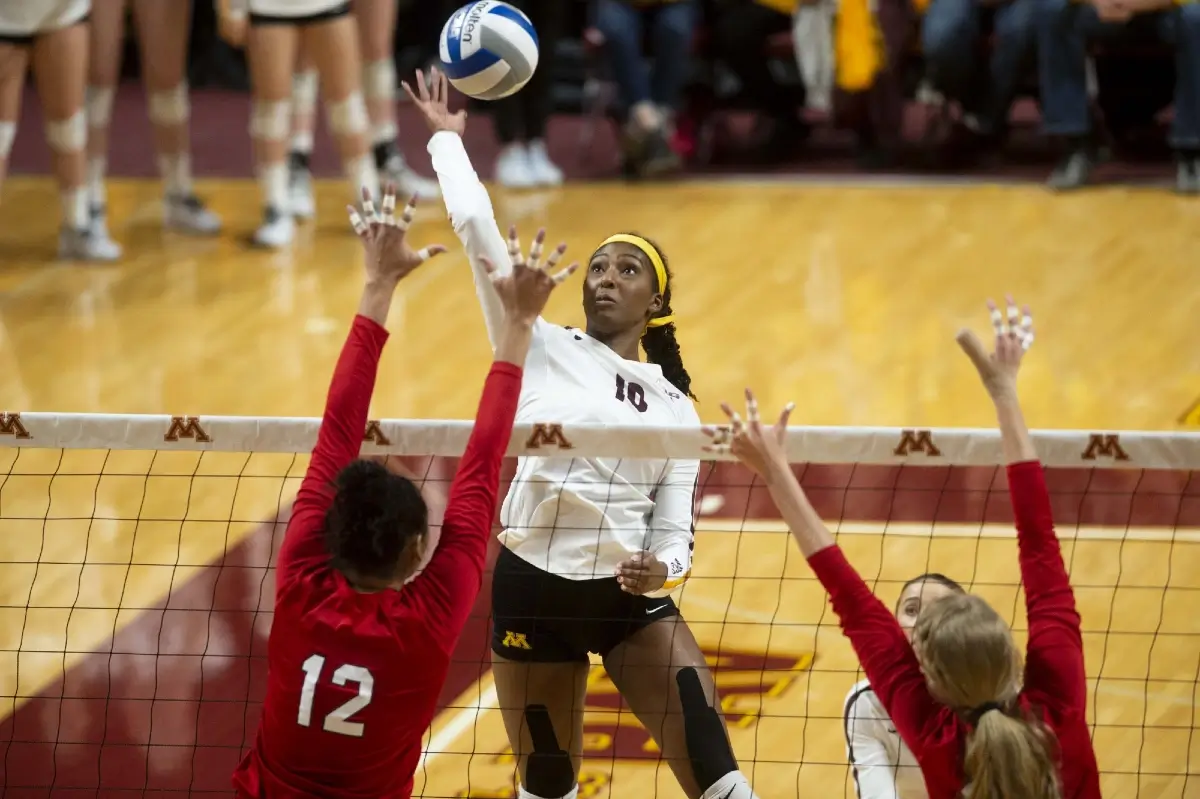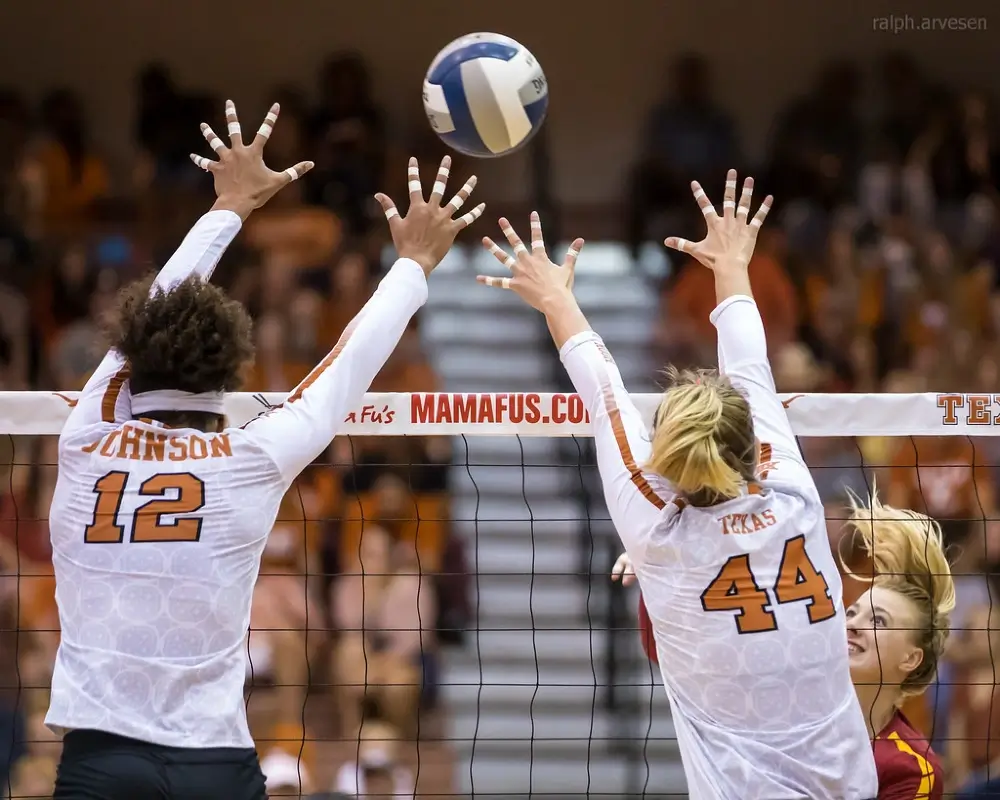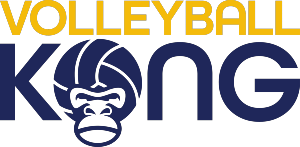Last Updated: February 26, 2024
In the dynamic arena of volleyball the opposite hitter often emerges as the team’s backbone, striking a critical balance between offensive firepower and steadfast defensive play. This role is akin to a jack-of-all-trades on the court, demanding a versatile skill set that goes beyond the norm.
First and foremost opposite hitters are the powerhouses of offense. They are the players who deliver those breathtaking spikes that electrify the crowd and demoralize the opposition. Their hitting prowess isn’t just about raw power; it’s about precision timing and the ability to read the game, turning every set into a potential point-winning opportunity.

But there’s more to this position than just hitting. The opposite hitter also plays a pivotal role in blocking. Positioned on the front right side of the court they often go head-to-head with the opposing team’s strongest attackers. It’s a role that requires not just physical height and jumping ability, but also the intellectual acumen to anticipate and counter the opponents’ moves.
The versatility of an opposite hitter also often extends to setting when the situation demands. In scenarios where the setter is unable to perform their role – perhaps after making the first pass or being out of position – the opposite hitter steps in. This adaptability requires them to have a well-rounded understanding of the game, exceptional ball-handling skills and a sharp sense of spatial awareness to set up teammates for successful attacks.
Mastering Offensive Skills
To excel as an opposite hitter, honing a range of offensive skills is essential. Let’s go deeper into these abilities.
Powerful Hitting Methods
The skill for delivering spikes is what makes hitters stand out. They need to enhance their spiking capabilities to become an expert in this field. Hitters require mixing finesse and power when spiking so as to prevail over the opponents. Superior jumping skills and an arm swing are two aspects that allow hitters to produce power and extent. It’s also essential to have the sense to understand setters’ movements and prepare themselves to hit the ball from the perfect position.
Hitters also need to be versatile in their attacking techniques. They should be able to spike precisely from any position and change attacking tactics at every point. Having versatility will outmaneuver the defense and keep them guessing.
Techniques of Back-Row Attack
Opposite hitters have the upper hand when it’s about attacks from the back row. These attacks are a component of a rounded offensive technique and are launched from behind a ten-foot line. Back row attacks when initiated with the right technique can bring out positive results by creating confusion in the rival team and exposing their weakness.
Being able to go from defense to offense when playing from the back row is necessary and require hitters to be alert and have a sense of timing.
When opposite attackers are at the back of the court, they have to make quick choices regarding their position and when to jump for a positive strike.
The Defensive Duties of an Opposite Hitter

Effective Blocking Techniques
Blocking plays a significant role in an attacker’s defensive game. They often position themselves to counter the opposing team’s hitters. To be successful they must have excellent timing and a sharp understanding of the game. This involves recognizing the hitting patterns of their opponents and adjusting their blocking strategy accordingly.
The opposite attacker must work in sync with other blockers to create a wall at the net. Their height and jumping ability are assets in this regard, as is their capacity to anticipate and react swiftly to their opponents’ attacks.
Serve Receive and Passing
Opposite attackers also play a role in serve reception and passing. Their ability to handle serves with precision is vital for maintaining the team’s rhythm and creating opportunities.
Being a hitter in volleyball requires not only technical skills to control the ball but also a deep understanding of court positioning and opponent serving patterns. Successful passing demands reflexes, precise ball control and the ability to swiftly transition from defense to offense. The contributions of a hitter in these areas are key for disrupting the opponent’s momentum and enabling their team to launch an effective counterattack.
The Mental Game: Adaptability and Leadership
In addition to physical abilities the mental aspects of the game play a significant role in determining an opposite hitter’s effectiveness.
Mental Fortitude in High-Pressure Situations
Volleyball at all levels involves high stress situations where mental toughness becomes just as important as physical prowess. Opposite hitters must possess resilience to handle pressure, to bounce back from mistakes and maintain focus throughout the game. This mental fortitude is vital for delivering performances and inspiring confidence in teammates.
Communication and Team Coordination
Effective communication and coordination with teammates are essential for a hitter. They must provide instructions during plays, offer insights and assist in coordinating offensive and defensive formations for their team. On the court their leadership goes beyond setting an example. They also focus on boosting team spirit and creating a cooperative team atmosphere.
Physical Fitness and Conditioning
Being a hitter in volleyball requires physical fitness and conditioning. This position demands a level of athleticism as players need to execute explosive jumps, quick directional changes and powerful hits throughout a match. To meet these demands opposite hitters should prioritize a well rounded fitness routine that includes strength training, cardiovascular endurance exercises and flexibility workouts.
Strength training plays a role in developing the power necessary for those explosive jumps and powerful spikes. Focusing on weightlifting exercises that target the legs, core and upper body will enhance power and stability.
Building endurance through activities like running or cycling is essential to ensure that the hitter maintains their energy levels throughout the match.
Incorporating flexibility exercises such as stretching and yoga helps improve range of motion, while reducing the risk of injuries. This allows for more efficient movements on the court.
Technical Skills and Game Knowledge
In addition to fitness, a hitter needs to possess strong technical skills and game knowledge. A deep understanding of volleyball strategies and techniques is critical in this role. It involves being able to read the game and anticipate opponents moves, skills that are vital for making split second decisions during intense gameplay.
Understanding defensive strategies, knowing when to switch tactics and adapting to the playing style of various opponents are all critical aspects of having a strong grasp on the game. Continuous learning and keeping up with the current techniques and strategies in volleyball are imperative for a player’s development in this role.
Drills and Practice for Improvement
Engaging in targeted drills is vital when aiming to enhance your skills. Practicing blocking is great for improving timing and hand placement, while self-tossing drills can enhance spiking accuracy and power. Pass-hit routines are great for coordinating serve reception with transitioning into an attacking position. By practicing these drills opposite hitters can significantly enhance their skills.
Essential Equipment for Opposite Hitters
Choosing the Right Shoes
Choosing the right shoes is extremely important for a hitter. For instance the Asics Gel Rocket 10 offers the cushioning and support required for the movements commonly seen in volleyball. These shoes are specifically designed to absorb impact during jumps and provide stability during movements, which are essential for effective play.
The Importance of Quality Knee Pads
Knee pads also play a part in your equipment. The Mizuno LR6 knee pads, known for their comfort and protective qualities are designed to soften impacts during dives and falls, while safeguarding your knees from injuries. These knee pads are engineered to provide coverage while allowing freedom of movement – an essential factor for opposite hitters who constantly need to be on their toes.
Conclusion
Becoming a hitter in volleyball requires a combination of physical training, game understanding, strategic thinking and having the right equipment. Consistent practice, dedication, a willingness to learn and adapt are decisive factors.
With the right mindset and approach any aspiring player can develop into an opposite hitter who contributes to their team’s success, while enjoying the excitement of this dynamic sport.
